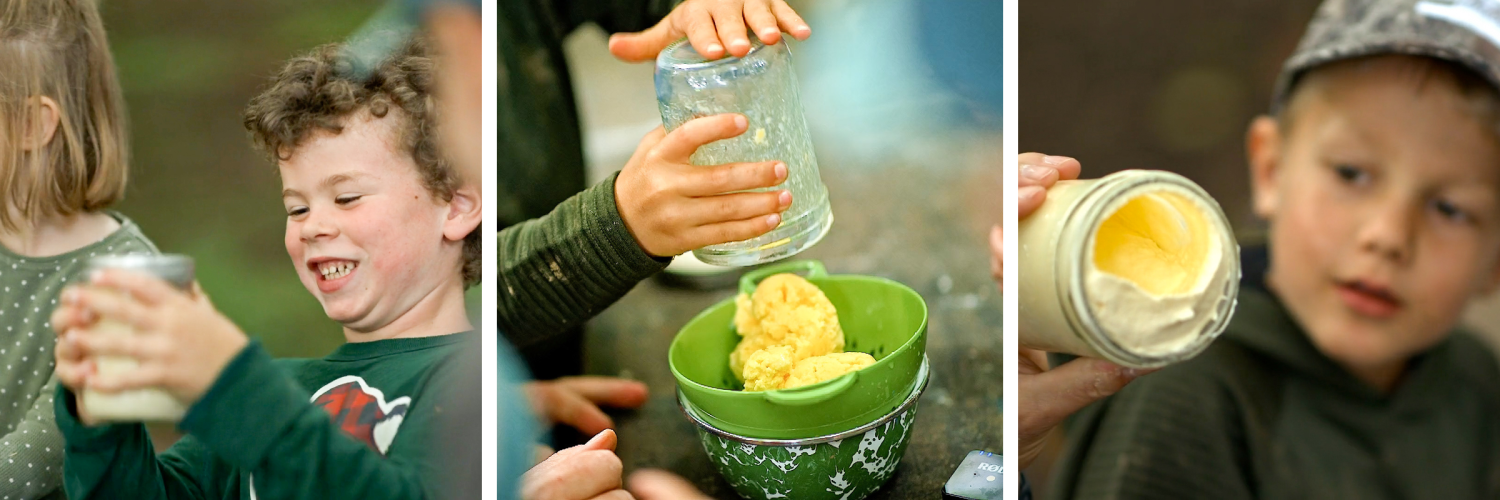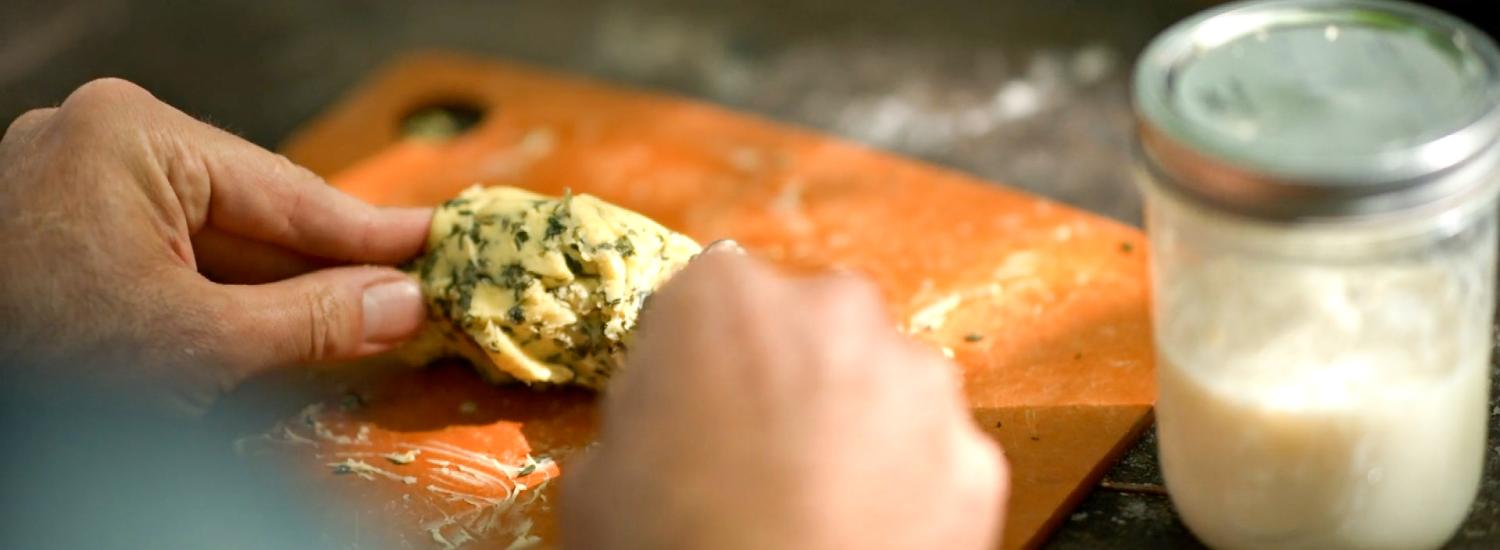Watch how to dive into butter making with your early learners! Discover the physical phases and properties cream goes through to become butter and sing while you work. Extend the learning by harvesting garden herbs and exploring spices to make compound butters to top on bread or crackers for a delicious snack.
- Room temperature cream
- Jars with tight fitting lids
- Bowl of ice water
- Colander
- Herbs or spices for compound butters
Compound Butters
Compound butter is just a fancy way of saying “butter with other stuff mixed in”! Try chopped herbs fresh from the garden, or a sweet version with maple syrup and cinnamon. Add a little salt to really bring out the flavors. Simply mix everything together in a bowl, and enjoy. If you make a lot at once, store any leftovers in a tightly sealed container or plastic bag in the freezer to use throughout the season.
Resources
- The buttermaking activity featured in this video is based on Shake It, Shake It, Shake It from Shelburne Farms’ Cultivating Joy & Wonder.
- For related extension activities try Dress Up a Cow or From a Cow?, also from Cultivating Joy & Wonder.
This video is one of a three-part series highlighting some of our favorite farm to early childhood classroom activities and how they can easily integrate into your program. Hosted by Shelburne Farms educators Jed Norris and Hannah Corbin, these how-to videos explore outdoor, place-based learning; cooking with kids; and extending children’s knowledge of plants, food, and food systems.
A special thank you to Vermont early educators Jackie Reno and Chong Ho Kim of The Janet S. Munt Family Room (Burlington, VT) and Laura Butler of Imagination Island (Milton, VT) for lending their perspectives and farm to early childhood wisdom.
This video series is a project of the Vermont Farm to Early Childhood Coalition, an Action Team of the Vermont Farm to School & Early Childhood Network. The project was supported by the Association of State Public Health Nutritionists through the Centers for Disease Control & Prevention.

The Association of State Public Health Nutritionists' Farm to ECE grantee programs are supported by the Centers for Disease Control and Prevention (CDC) of the United States (U.S.) Department of Health and Human Services (HHS), as one of several projects funded by cooperative agreement number NU38OT000279 (total of $6,320,000). This resource was supported by ASPHN's Farm to ECE grantee program, which is funded by the Division of Nutrition, Physical Activity and Obesity (DNPAO)/ National Center for Chronic Disease Prevention and Health Promotion (NCCDPHP)/CDC/HHS. The contents of this resource are those of the author(s) and do not necessarily represent the official views of, nor an endorsement by DNPAO/NCCDPHP/CDC/HHS, or the U.S. government.
